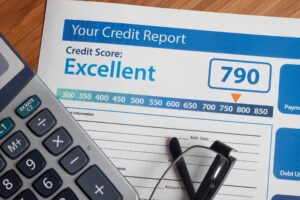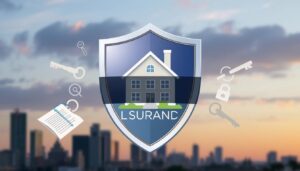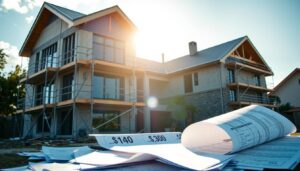**Title: Unlock Savings and Sustainability with Energy-Efficient Mortgages**
**Energy-Efficient Mortgages: A Comprehensive Guide**
Many homeowners spend thousands of dollars annually on energy bills and monthly utility payments. Energy-efficient mortgage (EEM) programs allow homeowners to “go green” and enjoy significant savings. With an EEM, current and prospective homeowners can finance energy-efficient upgrades in new and existing homes.
While O1ne Mortgage Inc. doesnt offer EEMs, we can explain their benefits and point you to a few alternatives.
**What Is An EEM?**
An EEM, sometimes referred to as a green mortgage, is a loan product that allows you to finance energy-efficient improvements in your home under favorable terms. You can combine an EEM with a conventional, Federal Housing Administration (FHA), or Department of Veterans Affairs (VA) mortgage. EEMs allow you to roll the cost of the upgrades into your mortgage or refinance to make eco-friendly and money-saving upgrades to your home.
**Why Get An Energy-Efficient Mortgage?**
A common scenario for an EEM is when a borrower buys an older property with an energy-inefficient HVAC system, drafty windows, a malfunctioning furnace, or other structural features that can benefit from energy-saving improvements. A home buyer may use an EEM to purchase an energy-efficient home, and a homeowner may use it to refinance a mortgage to fund energy-efficient upgrades.
**What Are The Benefits Of An EEM?**
The energy-efficient mortgage program can increase your borrowing power because your lender can issue a loan that covers the homes total value and the cost of your energy-efficient upgrades. Whether youre buying or refinancing a home, an EEM can be helpful for buyers with conventional or government-backed loans.
**Types Of EEM Programs And What They Finance**
Home buyers can pick from several EEM loan programs. Each type offers unique features and benefits and has different eligibility requirements.
**The FHA Loan Energy-Efficient Mortgage Program**
With a minimum 3.5% down payment, FHA loans are a popular mortgage choice for buyers. The FHA allows qualified borrowers to fold the additional cost of improvements into their loan amount once its verified that the projected energy savings will be higher than the total cost of the improvements. While borrowers must satisfy the standard FHA loan requirements, they wont need to qualify for the additional amount to finance the energy-efficient improvements.
Under the terms of an FHA loan, you can increase your total loan amount to cover your improvements. Lenders will factor in several variables to determine the additional loan amount. Youll be required to have a home energy assessment done. Depending on the cost of the improvements included in the assessment, the FHA may cover the costs upfront or contribute 5% of the lowest value among the following factors:
– The adjusted property value
– 115% of the median area price of a single-family home
– 150% of the national conforming mortgage limit
**What Do FHA EEMs Finance?**
The energy package is the central component of the FHAs EEM program. The package lists the FHAs approved home upgrades, including:
– Replacing older appliances with ENERGY STAR®-certified appliances
– Installing upgraded HVAC systems
– Replacing windows with high-performance double- or triple-glazed windows
– Installing renewable energy sources like solar panels
– Making insulation enhancements
– Sealing and weatherization
– Improving water heating systems
– Upgrading lighting fixtures with LEDs
– Installing smart energy systems
**Cost-Effective Requirements Of Energy-Efficient Mortgages**
The cornerstone of the FHA EEM program is energy-efficiency. Upgrading your home to maximize energy-efficiency can be a substantial upfront investment. However, the long-term savings on utility bills can outweigh the cost, especially when you use an EEM to finance your home improvements. To qualify for an energy-efficient mortgage, the long-term savings you get with utility bills must offset the cost of the upgrades.
For existing homes, this means improvements must pay for themselves over time. For newly constructed homes, the upgrades must exceed the energy efficiency standards set by the International Energy Conservation Code (IECC).
**The VA Loan Energy-Efficient Mortgage Program**
A VA-backed EEM offers favorable terms to qualifying active-duty service members, veterans, and surviving spouses. The VA energy-efficient mortgage shares similar requirements and covered upgrades with the FHA program. VA energy-efficient upgrades typically cant cost more than $6,000 on top of the approved VA loan amount, and homeowners must complete the upgrades within 6 months of closing on the home.
**What Do VA EEMs Finance?**
The VA energy-efficient mortgage program can finance:
– Solar heating and cooling systems
– Sealing and weatherization
– Gas and electric furnace upgrades
– Clock thermostats
– New or additional insulation
– Water heater insulation
– Thermal windows or doors, heat pumps, and vapor barriers
**Conventional Energy-Efficient Mortgage Programs**
Fannie Maes and Freddie Mac’s conventional EEM terms are the most generous of all EEM programs. You can borrow your conventional mortgage amount and up to 15% of the homes appraised value to spend on energy-efficient improvements.
**What Do Fannie Mae EEMs Finance?**
Fannie Mae energy-efficient mortgages, also known as the HomeStyle Energy mortgages, can finance:
– Improvements in energy-efficiency
– Water-efficiency improvements
– Renewable energy sources
– Home resilience readiness projects
– Existing home improvement debt
**What Do Freddie Mac EEMs Finance?**
Freddie Macs GreenCHOICE Mortgages® can finance energy-efficient improvements, such as:
– Programmable thermostats
– Weatherization and caulking
– Additional insulation
– HVAC replacement
– Solar water heaters
– High-efficiency appliances
– Replacement of doors and windows
**EEM Eligibility Requirements**
Homeowners must meet several lender requirements to secure an energy-efficient mortgage, including satisfying the minimum credit requirement and documentation guidelines and verifying that the energy-efficient improvements are cost-effective.
To be cost-effective, the upfront price of the energy-efficient upgrades must be less than your expected energy savings over time.
To qualify for an EEM, an energy consultant must conduct an energy audit. The audit uses the Home Energy Rating System (HERS) to measure your current energy-efficiency and estimate your potential energy savings after the upgrades. The cost of energy-efficient home improvements can also include generating the energy rating report and conducting related inspections.
A lender will consider your estimated savings on your energy bills as part of your qualification and underwriting process, and aspiring homeowners must also meet the financial requirements of their mortgage loan type.
**When An EEM Is A Good Choice**
EEMs are typically best suited for homeowners who want to save on utility bills and want long-term value. Theyre also popular with buyers who want to invest in home solar panels and other cost-effective technologies.
**Alternatives To An EEM**
If you dont qualify or an EEM isnt what youre looking for, you can use other options to fund your energy-efficient home improvement projects.
– **Cash-out refinance:** Swap out your existing mortgage for a larger mortgage and pocket the difference to fund your eco-friendly upgrades.
– **Home equity loan:** Withdraw a portion of your equity and convert it to cash to finance your energy-efficient improvements.
– **Personal loan:** Use a personal loan to fund your energy-efficient home improvement projects, but youll likely pay a high interest rate.
**Complementary FHA Energy-Related EEM Programs And Policies**
If a personal loan, home equity loan, or cash-out refinance doesnt work, the Federal Housing Administration offers complementary EEM programs or policies that may align with your goals.
– **Section 203(k) rehabilitation mortgage:** Combine an EEM with a Section 203(k) rehabilitation loan, stacking improvements from the energy package over the improvements you can make with a 203(k) loan.
– **Energy Efficient Homes (EEH):** If your home meets EEH standards, the FHA will stretch borrowing limits by 2%, which may help you qualify for a larger loan.
– **Solar and wind technologies:** Increase your mortgage amount to cover the installation of new wind or solar energy systems when purchasing or refinancing a home.
– **Weatherization:** Finance up to $3,500 to cover weatherization items, such as thermostats or insulation.
**The Bottom Line**
With an EEM, you can reduce energy consumption and potentially save thousands on utilities. Homeowners can buy the home of their dreams and outfit it with energy-efficient home upgrades or overhaul outdated home systems.
O1ne Mortgage Inc. doesnt currently offer EEMs, but we offer EEM alternatives that can generate the same money-saving, eco-friendly results. If youre interested in an alternative loan type, you can start your mortgage application online today. You can also give us a call at 888-372-8820.
**Keywords:** Energy-efficient mortgage, EEM, green mortgage, FHA EEM, VA EEM, conventional EEM, energy-efficient home upgrades, O1ne Mortgage Inc., mortgage refinance, eco-friendly home improvements, energy savings, utility bill savings, home energy audit, HomeStyle Energy mortgages, GreenCHOICE Mortgages.
Home Buying
1. Earnest Money 2. VA Loans 3. Real Estate Market 4. Home Buying Process 5. Purchase Agreement







